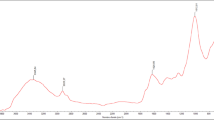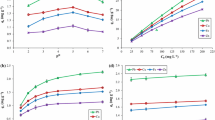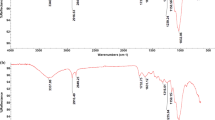Summary
Many studies have shown that water hyacinth (Eichhornia crassipes) roots can be used to accumulate high concentrations of organic as well as inorganic pollutants. They are currently used to remediate aquatic environments and aqueous solutions. In the present study, sorption of uranium from aqueous solutions by using dried roots of water hyacinth has been investigated. The sorption of uranium was examined as a function of initial concentration, pH, weight of roots and contact time. Five different concentrations 20, 40, 60, 80, and 100 μg . ml-1 were used. Sorption proves to be very rapid and depend on pH, weight of roots and concentration of uranium. Maximum sorption capacity of water hyacinth roots was 64,000 U6+ μg/g. The sorption of uranium by water hyacinth roots follows a Langmuir isotherm.
Similar content being viewed by others
Author information
Authors and Affiliations
Rights and permissions
About this article
Cite this article
Shawky, S., Abdel Geleel, M. & Aly, A. Sorption of uranium by non-living water hyacinth roots. J Radioanal Nucl Chem 265, 81–84 (2005). https://doi.org/10.1007/s10967-005-0790-x
Issue Date:
DOI: https://doi.org/10.1007/s10967-005-0790-x




